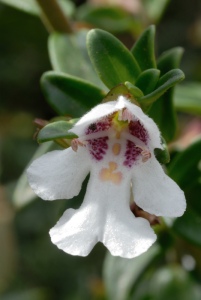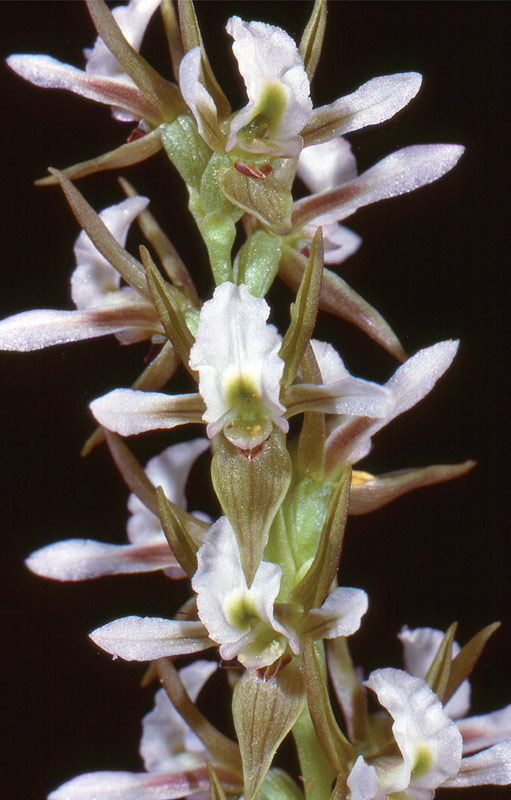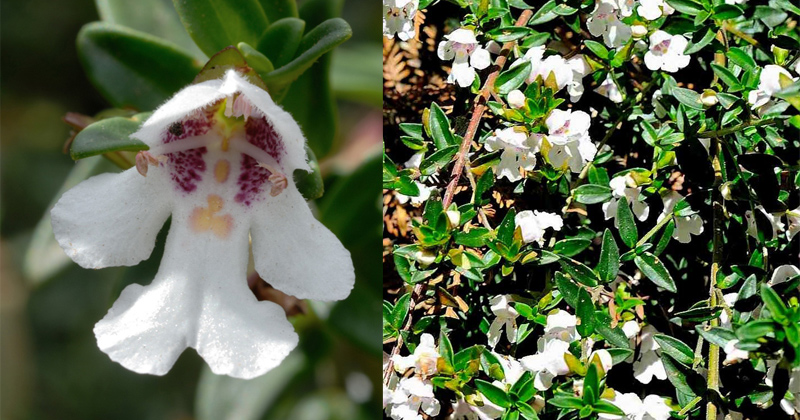A most interesting feature of Mt Canobolas biodiversity is the unfolding discovery of many endemic species. At least 10 species are found in the wild within the SCA and immediate surrounds, and nowhere else in the world. These species depend entirely on the SCA for their survival.

At least 10 species are considered to be endemic to the Canobolas volcanic complex. These include five plant species, Prostanthera gilesii, Eucalyptus canobolensis, Paraprasophyllum canobolense, Caladenia boweri and a Bulbine species [currently in the process of being described and named]. Four lichens, Gyalideopsis halocarpa, Sarcogyne sekikaica, Megalaria montana and Xanthoparmelia metastrigosa are endemic to the SCA, as is Cephalofovea pavimenta, the Mt Canobolas Velvet Worm. Other taxa, including shrubs in the genera Asterolasia and Phebalium still under study, are likely also to be endemics, along with several unnamed insects.
Two of the endemic plants E. canobolensis and P. gilesii are listed as threatened and the endemic lichens are part of the Endangered Mt Canobolas Xanthoparmelia Lichen Community. It is highly likely that the remaining non-listed endemic species would also qualify for threatened status if they were to be nominated.
The endemic shrub Prostanthera gilesii [formerly P. sp. C] (Giles’ Mintbush) is only known from two small colonies and has been listed as Critically Endangered under the BC Act.

The endemic shrub Prostanthera gilesii [formerly P. sp. C] (Giles’ Mintbush) is only known from two small colonies and has been listed as Critically Endangered under the BC Act. Photo by Dr Richard Medd 

Bulbine sp. endemic to the Canobolas volcanic complex 
Prasophyllum sp. endemic to the Canobolas volcanic complex. Photo By Dr Bower 

Xanthoparmelia metastrigosa Lichen endemic to the Canobolas volcanic complex
Xanthoparmelia metastrigosa Lichen endemic to the Mount Canobolas volcanic complex. Photo by Helmut Berndt
Vegetation Communities | Regionally Significant Species
Say NO to Mountain Bikes in Mt Canobolas State Conservation Area!

